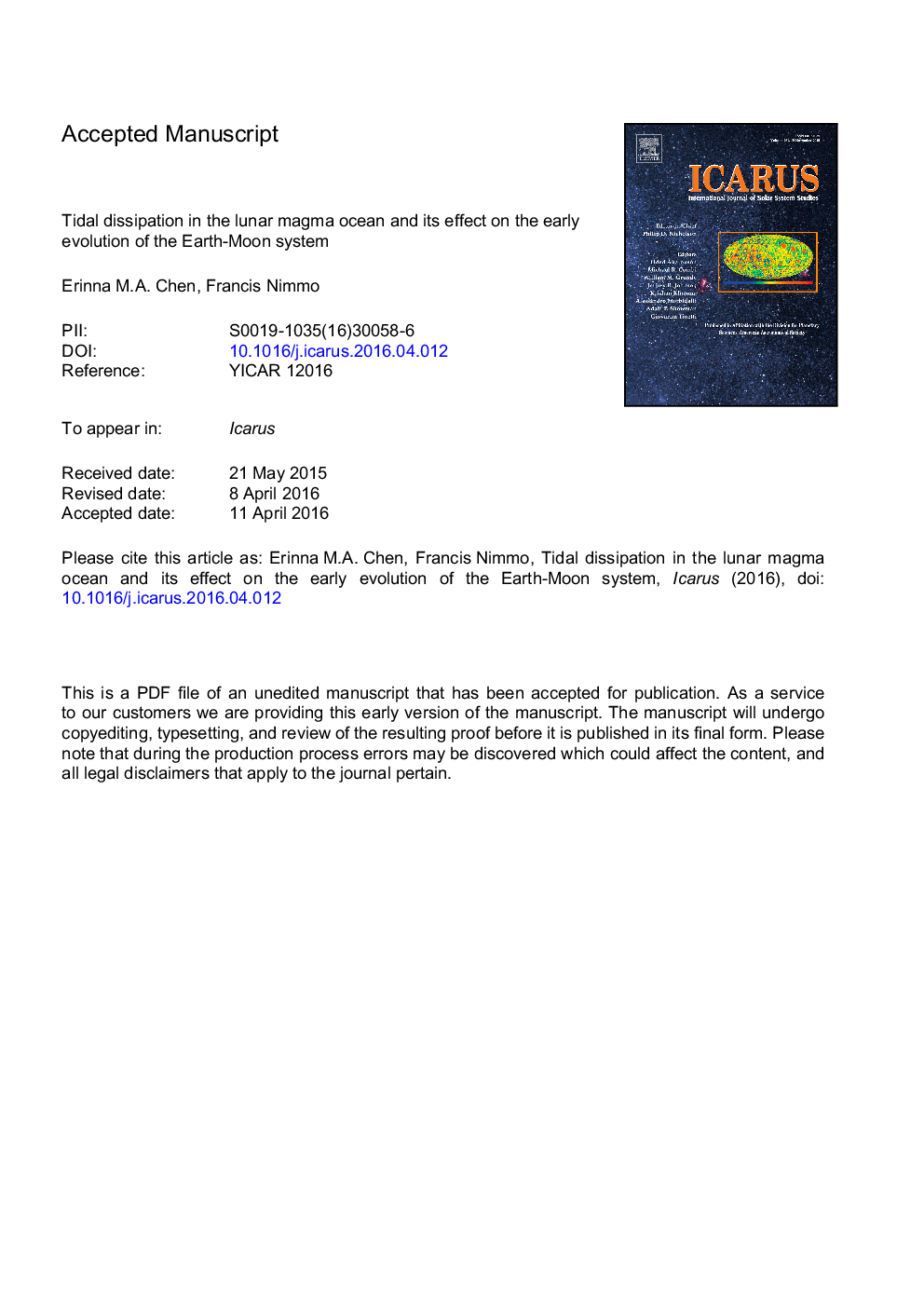| کد مقاله | کد نشریه | سال انتشار | مقاله انگلیسی | نسخه تمام متن |
|---|---|---|---|---|
| 8134948 | 1523515 | 2016 | 50 صفحه PDF | دانلود رایگان |
عنوان انگلیسی مقاله ISI
Tidal dissipation in the lunar magma ocean and its effect on the early evolution of the Earth-Moon system
ترجمه فارسی عنوان
رها شدن جزر و مد در اقیانوس ماگما ماه و تاثیر آن بر تکامل اولیه سیستم ماه-ماه
دانلود مقاله + سفارش ترجمه
دانلود مقاله ISI انگلیسی
رایگان برای ایرانیان
کلمات کلیدی
زمین، ماه، ماهواره ها، دینامیک، تاریخچه حرارتی، جزر و مد، بدن جامد،
موضوعات مرتبط
مهندسی و علوم پایه
علوم زمین و سیارات
علوم فضا و نجوم
چکیده انگلیسی
The present-day inclination of the Moon reflects the entire history of its thermal and orbital evolution. The Moon likely possessed a global magma ocean following the Moon-forming impact. In this work, we develop a coupled thermal-orbital evolution model that takes into account obliquity tidal heating in the lunar magma ocean. Dissipation in the magma ocean is so effective that it results in rapid inclination damping at semi-major axes beyond about 20 Earth radii (RE), because of the increase in lunar obliquity as the so-called Cassini state transition at â30 RE is approached. There is thus a “speed limit” on how fast the Moon can evolve outwards while maintaining its inclination: if it reaches 20 RE before the magma ocean solidifies, any early lunar inclination cannot be maintained. We find that for magma ocean lifetimes of 10Â Myr or more, the Earth's tidal quality factor Q must have been >300 to maintain primordial inclination, implying an early Earth 1-2 orders of magnitude less dissipative than at present. On the other hand, if tidal dissipation on the early Earth was stronger, our model implies rapid damping of the lunar inclination and requires subsequent late excitation of the lunar orbit after the crystallization of the lunar magma ocean.
ناشر
Database: Elsevier - ScienceDirect (ساینس دایرکت)
Journal: Icarus - Volume 275, 1 September 2016, Pages 132-142
Journal: Icarus - Volume 275, 1 September 2016, Pages 132-142
نویسندگان
Erinna M.A. Chen, Francis Nimmo,
